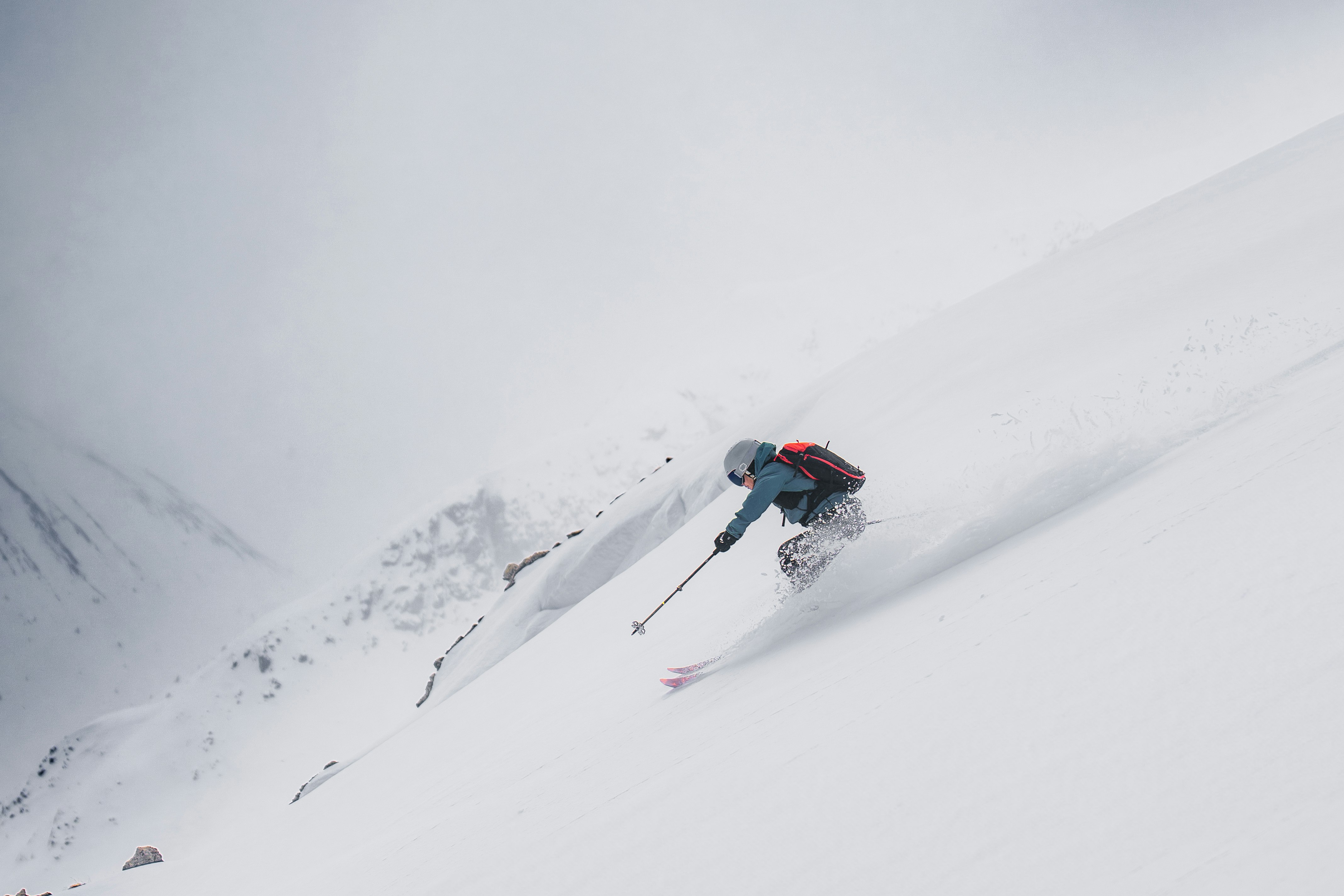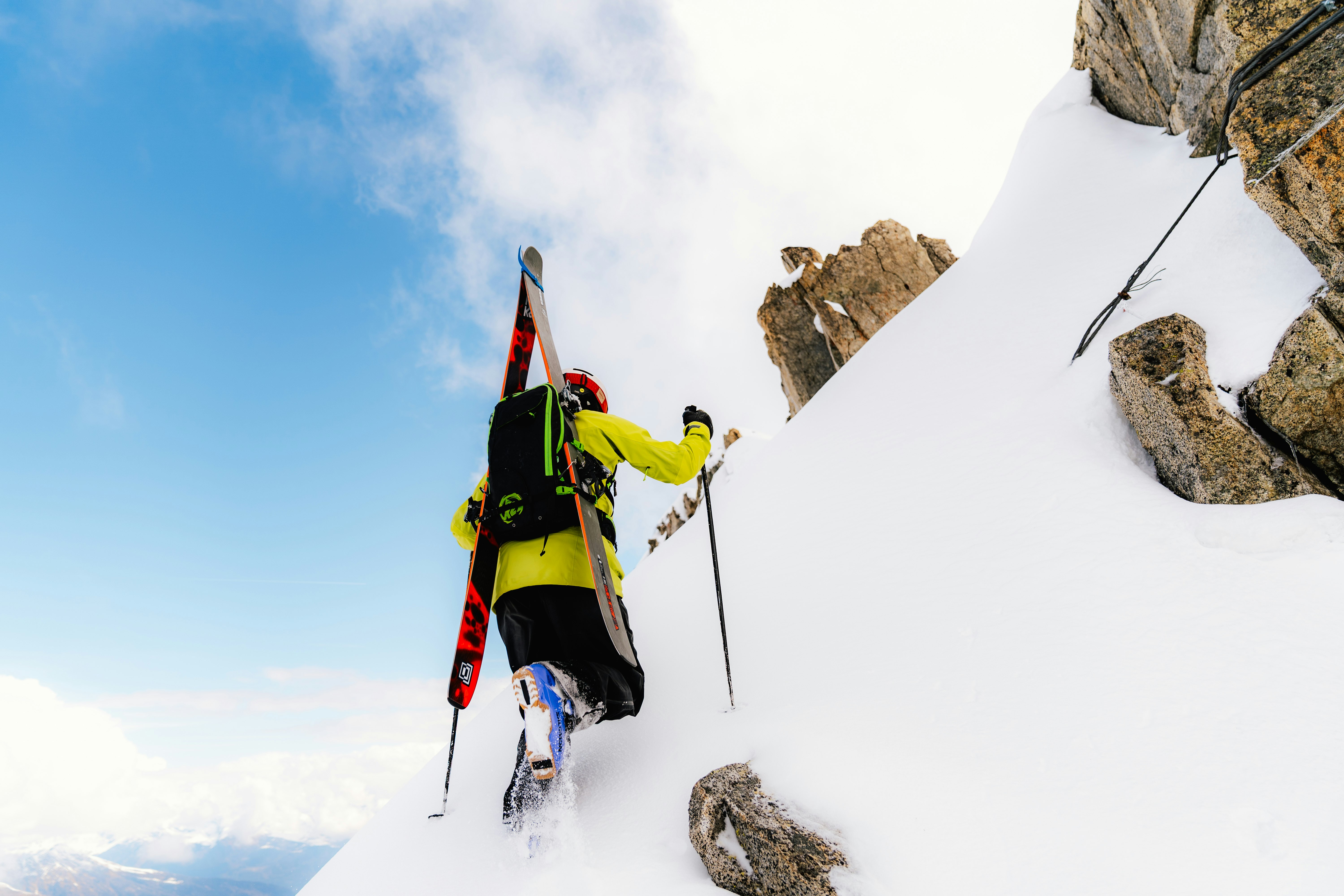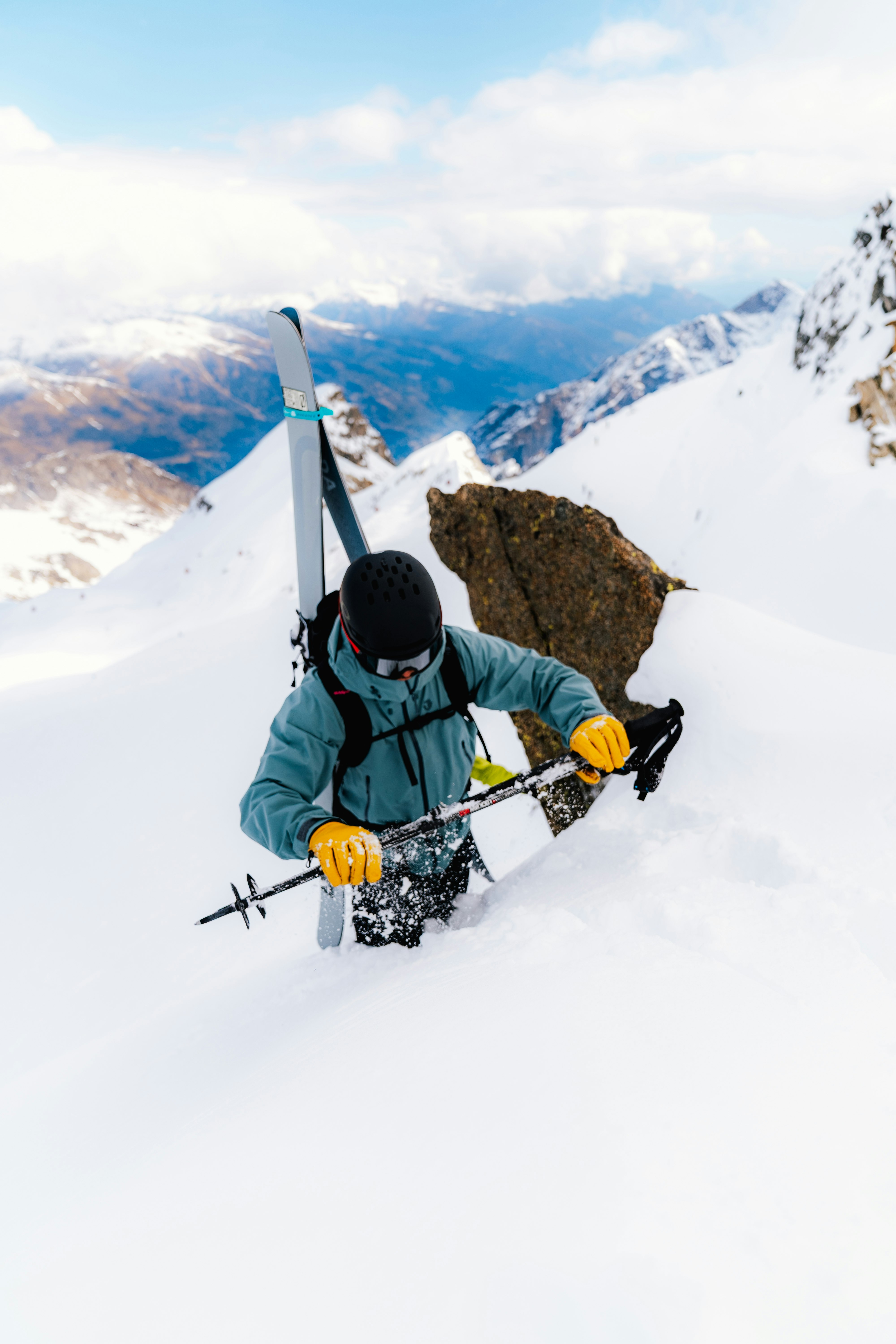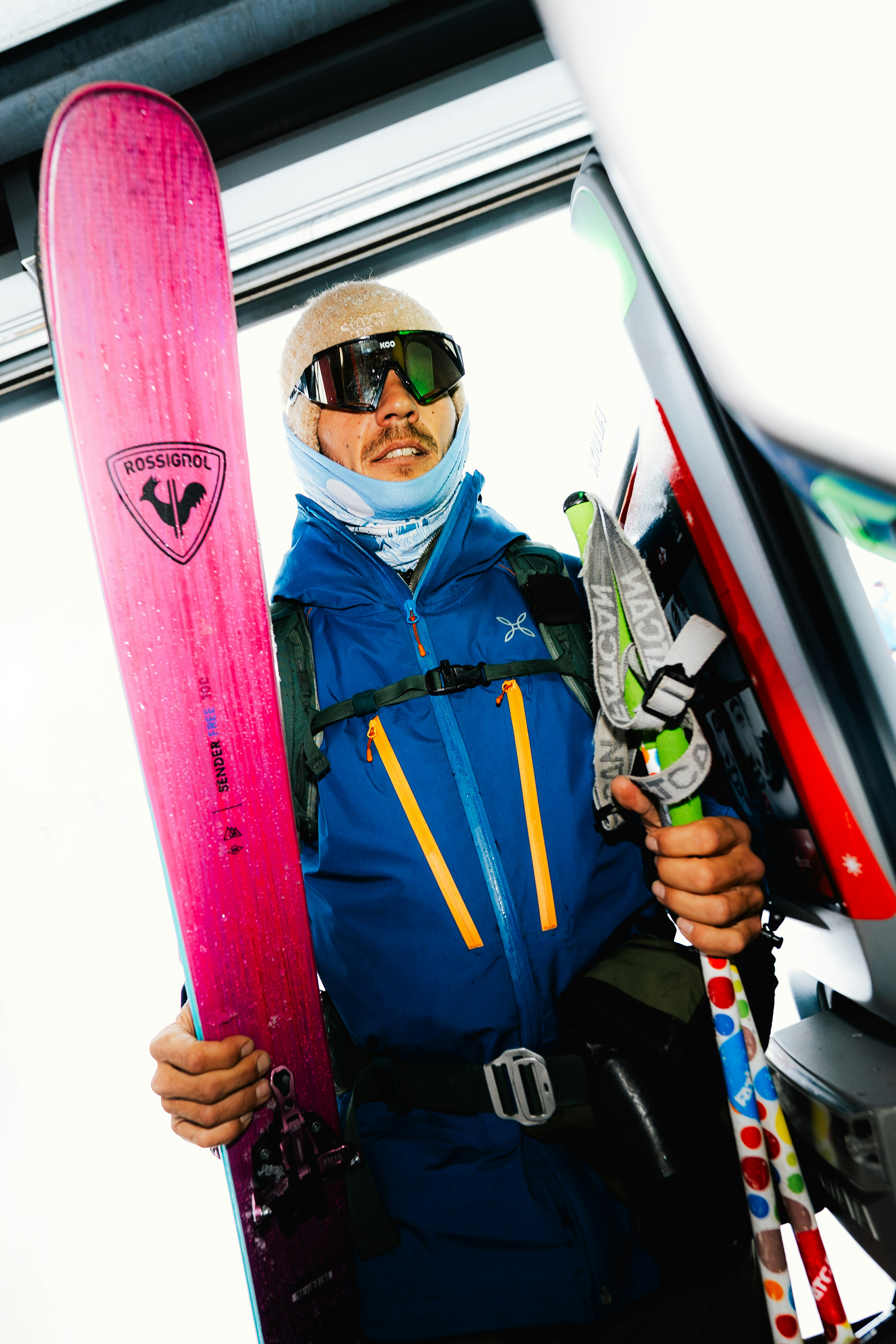Ski poles: they’re in control
They’re an excellent investment. The least expensive piece of kit, but one that has an outsized influence on technique, both on the way up, and especially on the way down
- Author: Guido ValotaElisa Bessega
- Photographer: Riccardo De Conti
Used in the right way, they’re also the most efficient, versatile learning tool you always have to hand. But if you choose the wrong ones, poles can become your worst enemy.
At the risk of sounding like a broken record, poles really are a crucial piece of equipment, whichever way you look at it. In philosophical terms, they’re an efficient cause. More attention should be paid to poles than what we see out and about on the mountain. In the last few seasons, we’ve noticed some positive signs from touring skiers, particularly those who started on piste or branched out from freeride to skinning uphill, and specialized vendors on the whole confirm this. You never know, maybe we at Skialper had a hand in this with our constant insistence. But still too many skiers neglect this part of their setup, especially the traditionalists. And yet, they’re an excellent investment. The least expensive piece of kit, but one that has an outsized influence on technique, both on the way up, and especially on the way down.

Choosing the right poles: size

Say it with me: longer poles aren’t less tiring, they don’t help you push further or stay more upright, nor do they improve your jump turns. Overly long poles make you walk badly, give you cold hands, and mean that you have to raise your arms needlessly high with each step, making your forward momentum erratic and disjointed. Worse still, in descent they hinder turn entry and you ski passively, with your legs stiff as a board. Take a look online. YouTube, Instagram reels and TikTok videos are full of excellent skiers from all over the world using the right poles. If there are any self-appointed gurus using overly long poles, they look ridiculous. That’s just the way it is. And long poles are very boomer coded.
When it comes to light & fast and racing, however, the technique used in ascent is very different to that of touring and freeride. The gliding phase, thanks to fast, small, treated skins, the lightness of the athlete, and low-angle track is in a way comparable to that of classic cross-country skiing. Here, the standard multiplier increases to 0.76 x your height. That includes those three centimeters above the strap on a Nordic ski pole, which sit between thumb and forefinger during the swing. It’s up to every skier to take into consideration their own build and technique when deciding to go for a slightly longer or shorter pole. And going up against the chronometer and fellow competitors is very different to taking on 3,000 m of elevation gain, which may be very light and very fast, but where there’s no ranking pressure. However, even here it’s easy to spot the same tendency to choose overly long poles, and once again, would you believe it, among those with less technical training. Comparing yourself to athletes further up the table is useful only if you’re able to distinguish between what you can emulate, and what simply comes down to innate talent. Otherwise you run the risk of making the mistake that generations of athletes have made (and continue to make) in any sport; if the winner does it then I should too. But the fact remains that we’re not all built the same.

In the aforementioned survey, we found that professionals preferred using fixed-length poles in their free time for touring and freeride, followed by two-piece models. So what’s changed since then? Two-piece poles have improved, especially the join between the sections, the locking mechanism and the cone-shaped shaft that in high-end models is often made from carbon, making it lightweight, stiff, and responsive. And what’s more, over the last couple of seasons, two-piece poles have also become popular among alpine skiers. This is more of a fad, used for on-piste/Instagram purposes, and has little to do with all-mountain or freeride setups . Aside from these fairly superficial considerations, a good two-piece pole won’t make you too nostalgic for a responsive, well-balanced, fixed-length pole. Here we’re specifically referring to skilled, experienced skiers who can feel the difference between different types of poles, but the same goes for everyone—you can’t go wrong with a good two-piece, including in terms of reliability and weight.
A three-piece model, however, isn’t ideal for skiing. They can be a little sluggish, heavy and unbalanced at the wrist. It’s noticeably worse in windy conditions, and in some cases after a little use you start to feel some play between the sections. They can be useful in certain (rare) situations, like storing inside your backpack to keep them out of the way of the rope when tackling a multi-pitch route, leaving your skis at the base of the climb. Or, alternatively, as a multi-purpose, year-round pole for all kinds of use.
For information on grip, baskets, tips and balance, read all the reviews carefully, they could be useful even if you’re considering a different type.

Share this article

